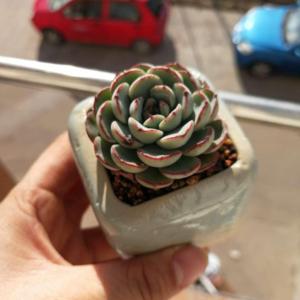文章
Miss Chen
2018年02月03日

Description: This perennial wildflower is 1–2½' tall and unbranched. The erect central stem is pale green and terete; it is covered with short pubescence and scattered long hairs. The opposite leaves are up to 3¼" long and ¾" across; they are linear-lanceolate or lanceolate-oblong, pale green, and entire (toothless) to slightly dentate along their margins (if teeth are present, they are small and widely spaced). Both the lower and upper surfaces of the leaves are short-pubescent. The central stem terminates in a panicle of flowers that is 4-10" long; this panicle is taller than it is wide. Individual flowers are about ¾" long, consisting of a white corolla, a short calyx with 5 teeth, 4 stamens, and a pistil with a single style. The corolla is tubular-trumpet shaped, becoming broader toward its upper and lower lips. The upper lip has 2 short rounded lobes, while the lower lip has 3 short rounded lobes. The lower lip projects outward to a greater extent than the upper lip.
Panicle of Flowers
Along the bottom of the corolla's interior, there are 3 faint purple veins and a pair of low ridges. Toward the throat of the corolla on the bottom, there is a narrow patch of yellow hairs. The exterior of the corolla is slightly pubescent. The calyx is light green and pubescent. The stalks of the inflorescence and pedicels of the flowers are also light green (sometimes with purplish tints) and pubescent. The blooming period occurs from mid-spring to early summer, lasting about 3 weeks for a colony of plants. There is no noticeable floral scent. Afterwards, the flowers are replaced by ovoid seed capsules about ¼" long or slightly longer. Each capsule contains numerous tiny seeds. Individual seeds are about 0.5 mm. in length or a little longer, triangular-ovoid and somewhat flattened in shape, and dark brown or black. Eventually, the capsules split in two to release their seeds; these seeds are small enough to be carried about by the wind. The root system consists of a crown with fibrous roots or a taproot.

Cultivation: Full to partial sun and mesic to dry conditions are preferred. Different kinds of soil are tolerated, including those containing clay-loam, sand, or rocky material. Reduced soil fertility is beneficial, because this reduces competition from taller and more aggressive plants.
Range & Habitat: The native Pale Penstemon is occasional throughout Illinois, except in east-central and some northern areas of the state, where it is uncommon or absent (see Distribution Map). Habitats include dry rocky woodlands, hill prairies, dry-mesic railroad prairies, sandstone and limestone glades, upland savannas, thinly wooded bluffs, rocky cliffs, and abandoned fields. Occasional wildfires are beneficial in maintaining populations of this species, particularly in wooded habitats.

Faunal Associations: The flowers of Pale Penstemon are cross-pollinated primarily by long-tongued bees, including honeybees, bumblebees, little carpenter bees (Ceratina spp.), and mason bees (Hoplitis spp., Osmia spp.); see Crosswhite & Crosswhite (1966) and Clinebell & Bernhardt (1998). A mason bee, Osmia distincta, is an oligolege (specialist pollinator) of Penstemon spp. These insects obtain nectar and/or pollen from the flowers. Short-tongued Halictid bees also visit the flowers for pollen. Other insects feed destructively on the foliage, flowers, or fruits of Penstemon spp. These species include the caterpillars of such moths as the Chalcedony Midget (Elaphria chalcedonia), Saunder's Sallow Moth (Sympistis saundersiana), and a stem-gall forming Gracillariid moth (Caloptilia murtfeldtella); see Covell (1984/2005), Panzer et al. (2006), and the Microleps website (2010). A polyphagous aphid, Abstrusomyzus phloxae, sucks sap from these plants (Blackman & Eastop, 2013). Generally, most mammalian herbivores appear to avoid the consumption of the foliage of these plants. For example, Georgia (1913) has stated that the foliage of Foxglove Penstemon (Penstemon digitalis) is rejected by cattle because it is unwholesome and bitter-tasting. However, Lindroth & Batzli (1984) have found that the young shoots of this same plant are readily eaten by the Meadow Vole (Microtus pennsylvanicus) in prairies.

Photographic Location: A small meadow at Busey Woods in Urbana, Illinois.
Comments: Pale Penstemon is a reasonably attractive wildflower that blooms a little earlier than other Penstemon spp. It can be distinguished from these other species by its evenly pubescent foliage and the following characteristics of its corolla: 1) the lower interior surface is distinctively ridged, rather than flat or concave, 2) the lower lip extends significantly beyond the upper lip, and 3) the exterior is white, rather than pale rose-purple. Overall, Pale Penstemon is more dainty in appearance than its taller and more aggressive cousin, Foxglove Penstemon (Penstemon digitalis). Another common name of Penstemon pallidus is Pale Beardtongue (or Beardstongue), which refers to the yellow hairs that line the throat of the corolla.
Panicle of Flowers
Along the bottom of the corolla's interior, there are 3 faint purple veins and a pair of low ridges. Toward the throat of the corolla on the bottom, there is a narrow patch of yellow hairs. The exterior of the corolla is slightly pubescent. The calyx is light green and pubescent. The stalks of the inflorescence and pedicels of the flowers are also light green (sometimes with purplish tints) and pubescent. The blooming period occurs from mid-spring to early summer, lasting about 3 weeks for a colony of plants. There is no noticeable floral scent. Afterwards, the flowers are replaced by ovoid seed capsules about ¼" long or slightly longer. Each capsule contains numerous tiny seeds. Individual seeds are about 0.5 mm. in length or a little longer, triangular-ovoid and somewhat flattened in shape, and dark brown or black. Eventually, the capsules split in two to release their seeds; these seeds are small enough to be carried about by the wind. The root system consists of a crown with fibrous roots or a taproot.

Cultivation: Full to partial sun and mesic to dry conditions are preferred. Different kinds of soil are tolerated, including those containing clay-loam, sand, or rocky material. Reduced soil fertility is beneficial, because this reduces competition from taller and more aggressive plants.
Range & Habitat: The native Pale Penstemon is occasional throughout Illinois, except in east-central and some northern areas of the state, where it is uncommon or absent (see Distribution Map). Habitats include dry rocky woodlands, hill prairies, dry-mesic railroad prairies, sandstone and limestone glades, upland savannas, thinly wooded bluffs, rocky cliffs, and abandoned fields. Occasional wildfires are beneficial in maintaining populations of this species, particularly in wooded habitats.

Faunal Associations: The flowers of Pale Penstemon are cross-pollinated primarily by long-tongued bees, including honeybees, bumblebees, little carpenter bees (Ceratina spp.), and mason bees (Hoplitis spp., Osmia spp.); see Crosswhite & Crosswhite (1966) and Clinebell & Bernhardt (1998). A mason bee, Osmia distincta, is an oligolege (specialist pollinator) of Penstemon spp. These insects obtain nectar and/or pollen from the flowers. Short-tongued Halictid bees also visit the flowers for pollen. Other insects feed destructively on the foliage, flowers, or fruits of Penstemon spp. These species include the caterpillars of such moths as the Chalcedony Midget (Elaphria chalcedonia), Saunder's Sallow Moth (Sympistis saundersiana), and a stem-gall forming Gracillariid moth (Caloptilia murtfeldtella); see Covell (1984/2005), Panzer et al. (2006), and the Microleps website (2010). A polyphagous aphid, Abstrusomyzus phloxae, sucks sap from these plants (Blackman & Eastop, 2013). Generally, most mammalian herbivores appear to avoid the consumption of the foliage of these plants. For example, Georgia (1913) has stated that the foliage of Foxglove Penstemon (Penstemon digitalis) is rejected by cattle because it is unwholesome and bitter-tasting. However, Lindroth & Batzli (1984) have found that the young shoots of this same plant are readily eaten by the Meadow Vole (Microtus pennsylvanicus) in prairies.

Photographic Location: A small meadow at Busey Woods in Urbana, Illinois.
Comments: Pale Penstemon is a reasonably attractive wildflower that blooms a little earlier than other Penstemon spp. It can be distinguished from these other species by its evenly pubescent foliage and the following characteristics of its corolla: 1) the lower interior surface is distinctively ridged, rather than flat or concave, 2) the lower lip extends significantly beyond the upper lip, and 3) the exterior is white, rather than pale rose-purple. Overall, Pale Penstemon is more dainty in appearance than its taller and more aggressive cousin, Foxglove Penstemon (Penstemon digitalis). Another common name of Penstemon pallidus is Pale Beardtongue (or Beardstongue), which refers to the yellow hairs that line the throat of the corolla.
0
0
文章
Miss Chen
2018年02月03日

Description: This is a short-lived perennial plant that forms a basal rosette during its first year, after which it produces one or more flowering stalks about 1-3½' tall from a thick rootstock. The basal leaves (2-5" long and 1-3" across) are pale grayish green or bluish green, ovate to obovate in shape, smooth along their margins, and glabrous, tapering either gradually or abruptly into petioles. They have a rather succulent texture. The stems of flowering plants are whitish green to pale red, terete (circular in cross-section), glabrous, and somewhat glaucous. The leaves along these stems are arranged oppositely; they are 2-4" in length and 1-2½" across. These latter leaves are pale grayish green to bluish green, ovate to ovate-cordate in shape, smooth along their margins, and glabrous; their tips are blunt. The leaves of each lower stem are sessile, while the smaller upper leaves often clasp the stem. Like the basal leaves, the opposite leaves have a rather succulent texture. From the axils of opposite leafy bracts (up to 1¼" long and ¾" across), there develops pairs of 1-3 flowers on short slender pedicels, forming a narrow raceme about ½-1½' long. Each flower has a pinkish lavender corolla up to 2" long, a pale grayish green or bluish green calyx with 5 teeth, a pistil with a single white style, and 5 stamens. The corolla is tubular-trumpet shaped and slightly flattened; it has an upper lip with two rounded lobes and a lower lip with 3 rounded lobes. Within the throat of the corolla, there are fine purple veins that function as nectar guides. Along the upper outer surface of the corolla, there is a slender longitudinal ridge. The glabrous calyx is less than ½" in length; its teeth are lanceolate. The tip of the white style, where the stigma occurs, is slightly swollen. The leafy bracts of the flowers are similar in appearance to the opposite leaves, except they are smaller in size. Similar to the upper leaves, their bases clasp the stem. The blooming period occurs from late spring to early summer, lasting about 3 weeks. Each flower remains in bloom for only a short time. There is no floral scent. The flowers are replaced by ovoid seed capsules that are a little longer than the toothed calyx. Each capsule contains numerous small seeds. The seeds are distributed to a limited extent by the wind when the stems of flowering plants sway back and forth. The root system consists of a stout taproot with coarse secondary roots. This taproot extends deep into the soil.

Cultivation: The preference is full sun, dry conditions, and poor soil containing rocky material or sand. This plant is easy to grow in locations that are sunny and well-drained, but it is rather short-lived. However, its seeds are fairly easy to germinate. Foliar disease is rarely troublesome; the biggest threat is root rot from poorly drained soil. Sometimes spider mites can be found on the foliage, but they appear to cause little damage. This plant has excellent drought resistance.
Range & Habitat: The native Large-Flowered Penstemon occurs in only a few northern or NW counties in Illinois (see Distribution Map), where it is rare and state-listed as 'endangered.' This plant is more common in states that are located to the west of the Mississippi River. Habitats include dry sand prairies, dolomite prairies, and gravelly hill prairies. Because of the showy flowers, Large-Flowered Penstemon is more often found in flower gardens, from where it rarely escapes. Fire is supposed to be harmful to the ecological success of this plant because its growing buds remain above ground. In its natural habitat, significant wildfires rarely occur because of the sparse vegetative cover.

Faunal Associations: The flowers are cross-pollinated by bumblebees and other long-tongued bees, including Osmia distincta and Synhalonia dubitata. These latter two bees appear to prefer the flowers of Penstemon spp. over other species. One long-tongued bee, Xylocopa virginica (Large Carpenter Bee), perforates the base of the corolla from the outside to rob nectar from Large-Flowered Penstemon. An unusual wasp, Pseudomaris occidentalis, is a specialist pollinator (oligolege) of Penstemon spp. Like many bees, this wasp uses nectar and pollen to feed its larvae. While the more western range of this wasp overlaps with the range of Large-Flowered Penstemon, it has not been observed in Illinois. Other floral visitors include pollen-seeking Halictid bees, masked bees (Hylaeus spp.), and Syrphid flies. Insects that feed destructively on the foliage and other parts of Penstemon spp. are uncommon, but they include the caterpillars of a moth, Elaphria chalcedonia (Chalcedony Midget), and Spharagemon collare (Mottled Sand Grasshopper). At the present time, information about the relationships between Large-Flowered Penstemon and vertebrate animals is unavailable.

Photographic Location: The photographs were taken at the webmaster's wildflower garden in Urbana, Illinois. The plants are an Illinois ecotype of this species from nursery-grown material.
Comments: Both the foliage and flowers of Large-Flowered Penstemon are beautiful and distinctive. Unfortunately, the blooming period of the flowers is rather short, but you can't have everything. Because of its distinctive bluish foliage and large flowers (up to 2" in length), this species is easy to distinguish from other Penstemon spp. that are native to Illinois. However, a non-native species from the west, Penstemon cobaea (Showy Penstemon), is somewhat similar in appearance and its flowers are equally large in size. Unlike Large-Flowered Penstemon, this latter species has pubescent stems, while its upper leaves and bracts have bases that are sessile, rather than clasping. Showy Penstemon has naturalized in Kane County, Illinois.

Cultivation: The preference is full sun, dry conditions, and poor soil containing rocky material or sand. This plant is easy to grow in locations that are sunny and well-drained, but it is rather short-lived. However, its seeds are fairly easy to germinate. Foliar disease is rarely troublesome; the biggest threat is root rot from poorly drained soil. Sometimes spider mites can be found on the foliage, but they appear to cause little damage. This plant has excellent drought resistance.
Range & Habitat: The native Large-Flowered Penstemon occurs in only a few northern or NW counties in Illinois (see Distribution Map), where it is rare and state-listed as 'endangered.' This plant is more common in states that are located to the west of the Mississippi River. Habitats include dry sand prairies, dolomite prairies, and gravelly hill prairies. Because of the showy flowers, Large-Flowered Penstemon is more often found in flower gardens, from where it rarely escapes. Fire is supposed to be harmful to the ecological success of this plant because its growing buds remain above ground. In its natural habitat, significant wildfires rarely occur because of the sparse vegetative cover.

Faunal Associations: The flowers are cross-pollinated by bumblebees and other long-tongued bees, including Osmia distincta and Synhalonia dubitata. These latter two bees appear to prefer the flowers of Penstemon spp. over other species. One long-tongued bee, Xylocopa virginica (Large Carpenter Bee), perforates the base of the corolla from the outside to rob nectar from Large-Flowered Penstemon. An unusual wasp, Pseudomaris occidentalis, is a specialist pollinator (oligolege) of Penstemon spp. Like many bees, this wasp uses nectar and pollen to feed its larvae. While the more western range of this wasp overlaps with the range of Large-Flowered Penstemon, it has not been observed in Illinois. Other floral visitors include pollen-seeking Halictid bees, masked bees (Hylaeus spp.), and Syrphid flies. Insects that feed destructively on the foliage and other parts of Penstemon spp. are uncommon, but they include the caterpillars of a moth, Elaphria chalcedonia (Chalcedony Midget), and Spharagemon collare (Mottled Sand Grasshopper). At the present time, information about the relationships between Large-Flowered Penstemon and vertebrate animals is unavailable.

Photographic Location: The photographs were taken at the webmaster's wildflower garden in Urbana, Illinois. The plants are an Illinois ecotype of this species from nursery-grown material.
Comments: Both the foliage and flowers of Large-Flowered Penstemon are beautiful and distinctive. Unfortunately, the blooming period of the flowers is rather short, but you can't have everything. Because of its distinctive bluish foliage and large flowers (up to 2" in length), this species is easy to distinguish from other Penstemon spp. that are native to Illinois. However, a non-native species from the west, Penstemon cobaea (Showy Penstemon), is somewhat similar in appearance and its flowers are equally large in size. Unlike Large-Flowered Penstemon, this latter species has pubescent stems, while its upper leaves and bracts have bases that are sessile, rather than clasping. Showy Penstemon has naturalized in Kane County, Illinois.
0
0
文章
Miss Chen
2018年02月03日

Description: This perennial plant is ½–1' tall and unbranched. The foliage consists primarily of basal leaves up to 6" long and 2" across, which are arranged as a rosette. From the center of this rosette, emerges a stout flowering stalk, which is often covered with long white hairs. The stalk itself may be green or reddish brown. There are a few small leaves that alternate along this stem. The leaves are lanceolate or oblanceolate, with angular pinnate lobes and crenate margins. The margins have a tendency to undulate vertically. These characteristics provide the leaves with an almost fern-like appearance, except they are somewhat heavier and thicker.
The flowers occur along a spike at the top of the stem. They are about ¾" long and tubular with two lips. The upper lip curves downward and functions as a protective hood, while the lower lip functions as a landing pad for insects. The flowers are usually yellow, but sometimes brownish red. The lower lip of the flower is often white. These flowers bloom from the bottom up during late spring; this blooming period lasts about 3 weeks. There is a mild floral fragrance that is not always detectable to the human nose, although bees and other insects can detect it. The flowers are replaced by large fruits that are angular and hairy. The root system consists of a taproot, and lateral roots that are parasitic on the roots of grasses and possibly other plants. Wood Betony, however, is capable of normal growth and development even when suitable host plants are unavailable. This plant often forms colonies by reseeding itself.
Cultivation: The preference is partial to full sun, mesic to dry conditions, and a somewhat acidic soil, which can be loamy or sandy. Most of the growth and development of this plant occurs during the spring, although the leaves stay green during the summer.

Range & Habitat: The native Woody Betony occurs occasionally in the northern half of Illinois, but it is uncommon or absent in the southern half of Illinois (see Distribution Map). Habitats include mesic to dry black soil prairies, open woodlands and sandy woodlands, savannas and sandy savannas, thickets, and borders of lakes. This plant is often associated with the Black Oak in woodlands and savannas. Because of its parasitic habit, there is a tendency for the surrounding grass to be shorter in height than it would be normally, creating open areas along the ground where colonies of Wood Betony occur.
Faunal Associations: Long-tongued bees are the primary visitors of the flowers, including queen bumblebees and Mason bees. Occasionally, short-tongued Halictid bees may visit the flowers to collect pollen, but they are non-pollinating. Little information is available about this plant's relationship to birds and mammalian herbivores.

Photographic Location: The photographs were taken at a meadow of Orchid Hill in Vermilion County, Illinois, the Prospect Cemetery Prairie in Ford County, Illinois, and a rocky woodland of the Potholes in west-central Indiana.
Comments: Wood Betony is very showy when it is in full bloom. Because of the unusual flowers and foliage, it has a striking appearance. There are other Pedicularis spp. that this plant resembles, however most of them don't occur in Illinois. An exception is Pedicularis lanceolata (Swamp Betony), which differs from Wood Betony by its greater height, leaves with shallower pinnate lobes, and preference for wetland habitats. The flowers of these two plants are very similar. Another common name for this plant is Lousewort, which was based on the mistaken belief that it could repel lice and similar parasites from livestock.
The flowers occur along a spike at the top of the stem. They are about ¾" long and tubular with two lips. The upper lip curves downward and functions as a protective hood, while the lower lip functions as a landing pad for insects. The flowers are usually yellow, but sometimes brownish red. The lower lip of the flower is often white. These flowers bloom from the bottom up during late spring; this blooming period lasts about 3 weeks. There is a mild floral fragrance that is not always detectable to the human nose, although bees and other insects can detect it. The flowers are replaced by large fruits that are angular and hairy. The root system consists of a taproot, and lateral roots that are parasitic on the roots of grasses and possibly other plants. Wood Betony, however, is capable of normal growth and development even when suitable host plants are unavailable. This plant often forms colonies by reseeding itself.
Cultivation: The preference is partial to full sun, mesic to dry conditions, and a somewhat acidic soil, which can be loamy or sandy. Most of the growth and development of this plant occurs during the spring, although the leaves stay green during the summer.

Range & Habitat: The native Woody Betony occurs occasionally in the northern half of Illinois, but it is uncommon or absent in the southern half of Illinois (see Distribution Map). Habitats include mesic to dry black soil prairies, open woodlands and sandy woodlands, savannas and sandy savannas, thickets, and borders of lakes. This plant is often associated with the Black Oak in woodlands and savannas. Because of its parasitic habit, there is a tendency for the surrounding grass to be shorter in height than it would be normally, creating open areas along the ground where colonies of Wood Betony occur.
Faunal Associations: Long-tongued bees are the primary visitors of the flowers, including queen bumblebees and Mason bees. Occasionally, short-tongued Halictid bees may visit the flowers to collect pollen, but they are non-pollinating. Little information is available about this plant's relationship to birds and mammalian herbivores.

Photographic Location: The photographs were taken at a meadow of Orchid Hill in Vermilion County, Illinois, the Prospect Cemetery Prairie in Ford County, Illinois, and a rocky woodland of the Potholes in west-central Indiana.
Comments: Wood Betony is very showy when it is in full bloom. Because of the unusual flowers and foliage, it has a striking appearance. There are other Pedicularis spp. that this plant resembles, however most of them don't occur in Illinois. An exception is Pedicularis lanceolata (Swamp Betony), which differs from Wood Betony by its greater height, leaves with shallower pinnate lobes, and preference for wetland habitats. The flowers of these two plants are very similar. Another common name for this plant is Lousewort, which was based on the mistaken belief that it could repel lice and similar parasites from livestock.
0
0
文章
权问薇
2018年02月03日

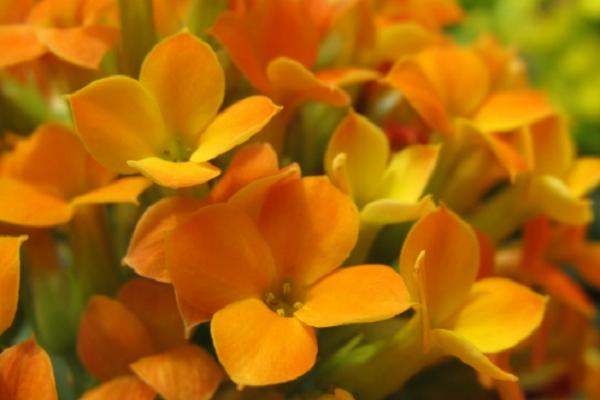
一.扦插方法:
1.扦插枝条的选择与处理。枝条选择最简单,直接在现有的成熟植株上剪下一枝即可。剪切口处往上五厘米内的多余叶子要摘掉只余两片。之后将枝条放在干净通风的位置自然晾干三天。晾干后再将花枝切口处浸入生根液,这样可以保证生根速度增加存活几率,要注意一根枝条只要浸泡一次,过多则适得其反抑制生长。
2.花盘及土壤的选择。因为长寿花是气生根,对透气性和排水性都有要求。所以花盆最好选择透气性好的底部带排水孔的粘土盆,土壤可以选择沙土或者直接在花店购买排水好的土壤。
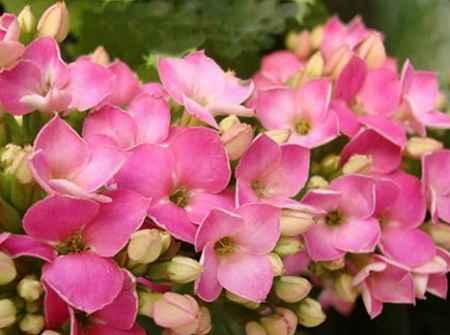
3.前期种植与保湿。直接将枝条插入土壤中,顶部露出,固定好后浇透水。保湿有一个简单便捷的方法:拿一个尺寸足够完全覆盖花盆的透明塑料袋,顶部剪几个口子以透气,之后套在盆上直到两至三周后开始生根。
4.后期浇水与保温。长寿花喜温怕寒,冬季寒冷,最好放在温度十五度左右的室内通风并且阳光充足的地方。当土壤干燥时浇水,大约一周一次,在前两三周浇水后不要忘了再将塑料袋套上,浇水时要浇透至排水孔有水漏出,注意如果有底部托盘就要将底部托盘的水倒净再放回盆底,否则容易根烂。
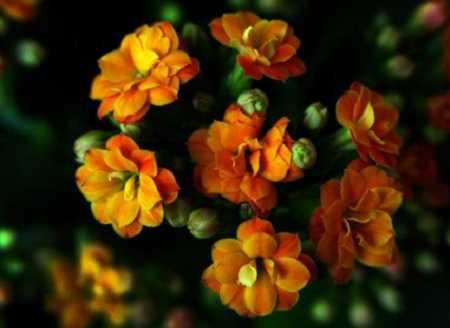
二.养护事项:
1.摘心与打顶。对于长寿花来说,生长期长得太高太长不利于后期开花繁密,所以一定要及时摘心与打顶以多分侧枝。当其长到五对叶子的时候要摘中间三对只留两对,之后等侧芽再长出五对时重复操作,约需摘心两、三次;对于过长或者分侧枝过少的枝条要将上部直接剪掉只留底部两对叶片。
2.施肥。施磷钾肥有助于花苞繁密并且延长花期,按生长情况半月或者一月一施都可以。生长期适当施氮肥也有助于生长。
3.病虫害防治。白粉病是长寿花的最常见病害,可喷专用的杀菌药预防,频率大概每月一次,喷时注意叶子背面也要顾及。
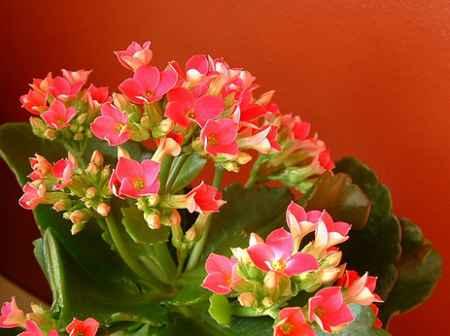
0
0
文章
权问薇
2018年02月03日


1.光照
这种多肉的植物一般都是比较喜欢阳光的,但是也害怕暴晒,所以在春秋和冬季的时候它可以享受一整天的日照。但是在夏天温度高的时候就要对它进行一定的遮挡太阳,而且还要保持比较好的通风环境,这样子才能够让它更好的成长。所以光照也是很重要的。

2.温度
它不耐冷,比较喜欢温和的地方,所以在冬天的时候我们一定要让盆里土是干燥的,而且还要维持温度在5度以上。因为温度太低的话就会出现冻伤,有时候还会死掉。但是也不能温度太高了,因为它也怕暴晒,还是要适当的降温的,千万不能温度太高了。

3.水分
它和其他的多肉是一样的,比较的耐得住干旱,所以平时给水的时候我们一定要等到它完全干了再进行浇水,如果不干的话就不要浇水了。它在生长的时候一般都是等到它干透的时候在进行浇水,但是记得千万不能够用头淋。在春天的时候给水也是要看情况的,要慢慢浇水,一定要看天气给它浇水。所以浇水也是对它很重,不能乱浇水。
4.土壤
多肉布纹球对土壤的要求不是特别的高,一般培养土还是要求那些排水性好一点的素沙土。然后混合一点泥炭,比例也是随意的,但是一定要以透气为主,一般多肉植物都比较喜欢排水和透气好的土质,所以选择培养土的时候也是要注意的,一定要满足它对土质的要求。不然对它的生长也不好。
0
0
文章
权问薇
2018年02月03日


1.播种
多叶芦荟,可以通过播种的方法进行繁殖的。首先我们等到它开花之后,把那些已经长成熟的种子给采摘出来,进行稍微的晾晒之后,等到合适的季节就可以对它进行播种,当然那在播种之前我们也可以用一些比较容易生根的溶液把它的种子泡一下,然后在撒播到已经准备好的花盆上面,这样就可以让它更加容易的成活,只要养护的适当,用不了多长时间就会开始发芽长出小苗了。

2.扦插繁殖
这种方法是在芦荟长得非常好的时候,采取一些生长比较充实的主茎或者是侧枝,来作为它的插穗进行扦插。扦插的时候我们要保证芦荟的伤口已经是 干燥的,这样就可以避免它 感染了。等到生根之后,再去给它浇水。在这之前可以往盆土里面喷一些雾水,保持盆土是湿润的就可以了。另外,用生根剂处理晾放之后,再去进行扦插的话,就可以很好的让它更容易的成活。由此看来,它虽然可以用这种方法进行繁殖,但是芦荟的叶子是不可能成活的,一切繁殖都是要从它的分枝来作为繁殖的来源。

3.插穗
我们可以找来一些它的茎或者是主茎上面长出来的分枝,最好上面 有4到6片的叶子,高度有6到10厘米的分枝来当做 它的插穗就可以了。主要茎的顶端也可以切下来10到15厘米作为它的插穗。插穗剪下之后是不能够马上开始插种的,不然就会让它切口的伤口开始腐烂掉,一般都是在剪完之后再放上3到5天,等到它的切口充分的晾干之后再去插值就可以了。另外插穗的大小跟它的生根也是有一定的关系,一般都是6到10厘米的分枝去扦插的话,生根的时间会短一些。
0
0
文章
权问薇
2018年02月03日


一、种植条件
1、水分
垂盆草的繁衍能力很强,生长能力也很强。种播时对水分没有明确的要求,湿润温和就可以,不要太干燥。
2、土壤
垂盆子是不择水土的一种草药,普通的健康土质就能产生生存,可以选择排水性能好的沙质土,也可以选择土质疏松、营养含量较高的田园种植土。当然种子要萌发时期需要大量营养,土壤贫瘠是不能要的。
3、温度
因为垂盆草的种子生命力比较强,春、夏、秋三季都可以播种,对温度要求也不高,正常室温十五到30度都可以种,温度过低会降低种子的活性,尽量避开冬天。
4、取种
垂盆草是夏季开花,秋季结种。每年9月份左右可以采取种子。如果不是立刻播种,用纸盒子密封保存,躲过冬天就可以使用了。

二、播种步骤
1、垂盆草生长旺盛的时期,它的枝叶会延伸到盆外,形成“垂盆”的效果,所以在种植的时候尽量选择可以吊起来的花盆或者其他容器,保证排水功能正常,防止后期因为排水造成过涝。也可以在花盆下面垫块瓦片,排水效果好。
2、可以选择购买的营养土,也可以使用田园土、黄沙、细锯末自己配置营养土。将土放进盆内,覆土。
3、给水要使用喷灌的方法,保持土质湿润,不要直接用水冲。
4、如果是夏季种植,不要直接暴晒,可以放在阴凉通风的地方等待发芽;如果是秋季种植,可以定期晒晒太阳,但是注意防风。
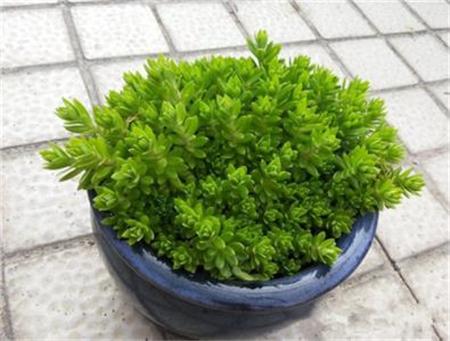
0
0
文章
张祥明
2018年02月03日


一、春季光照不足
1.原因:在春天季节,阳光较少,而这种花喜欢阳光充足的环境,如果我们把它长时间放在室内光线阴暗的地方,这会导致它不出现花蕾,从而不开花。
2.措施:特别是在春季阳光不充足的时候,我们最好把它放到阳台或者是院子里晒晒太阳。

二、夏季水分不足
1.夏季水分较少:在相对湿润的条件下它的生长比较茁壮,所以我们要需要保持土质偏湿,如果水分太少,就不能满足其基本生长的需求量,会导致它不开花。
2.夏季水分过多:我们在养殖的过程中要注意夏季的水量是否适宜,还有,我们要记住一点,一定不能让它淋到雨水。

三、秋季修枝方法不当
1. 原因:当枝叶过于繁茂时,它的叶子会吸收大量的养分,这本应该被花吸收的养分消失以后,就会导致植物不开花。
2.措施:我们要对多余的枝条进行定期的修剪。我们要选择剪去那些残败瘦弱的枝条、过于生长的枝条。

四、冬季空气不流通
1. 原因:虽然它能在在湿润的条件中生长良好,但是当室内通风不顺,会导致土壤中的水气过重,无法快速蒸发,从而它的土壤湿度得不到调节,结花也会受到一定影响。
2.措施:要把海棠花放到通风的地方,尤其是冬季的时候,要注意光照和通风。
0
1
文章
权问薇
2018年02月03日


一、播种繁殖
1.种植的时间
一般它最经常用的繁殖方法就是播种的方式,具体的时间就是在8月低到9月初的这段时间,因为这时候的天气已经渐渐变凉,并不像夏天那么炎热了,所以此时播种效果更好。
2.种植的方法
种之前,我们要先把培养土准备一下,一般就是找来一些腐叶土和河沙配置而成。土壤准备好了之后,下面就可以取来种子开始撒播了,因为它的种子是非常小的,所以在种的时候,不能让种子之间过于紧凑,不然会让以后长出来的小苗显得很细弱,种完了之后,我们就可以用一些细土撒在种子上,将它盖上,盖的时候,不能让土层太厚,或者不盖也可以。然后就可以在盆子上盖上玻璃或蒙上薄膜去保持湿度和温度了,并且还要将它放在阴凉通风的地方。过上不久,小苗就会长出来了。

3.后期养护
种子种完之后,我们要维持温度在20度左右,一般过上7到10天就可以长出小苗,但是在这期间,如果出现土壤很干情况时,就要及时给盆子浸水,以保持土壤湿润。等到小苗长出来之后,我们就要把上面的覆盖物揭掉了,然后把温度控制在15度就可以了。
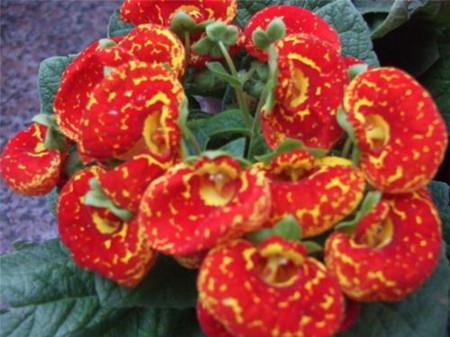
二、扦插法
出了上面的播种方法,还有一些少量的植株需要用到扦插的方法来实现繁殖。首先我们可以从它的植株上找到一块较为粗壮的根茎,然后一同切下,之后就可以将它们一同插在准备好的盆土内,插完了之后我们要适当的给它遮阴和保湿,基本上过不了多长时间,它就会开始生根了,等到根生出来之后,我们就可以将它进行移栽了。但是因为扦插的成活率是很低的,所以很少会用到。
0
0
文章
权问薇
2018年02月03日


一、浇水方法
1、浇水时间
常说荷包花就像一个娇羞的女子,那么给荷包花浇水也要很温柔,浇水的时候一定要注意把握度。它适合在较为湿润的条件下生长,所以浇水时需要根据介质的湿度合理调整。
如果介质比较干了,就可以浇水给荷包花补充水分,如果介质已经比较湿润了,就可以暂时不用浇水了,总之要让荷包花持续处在湿度较为合适的介质中生长。

2、浇水水量
除了浇水时间之外,还需要把控每次浇水的水量,每次只需要根据实际情况浇适量的水就可以了,就像前面提到过的,它非常娇弱,浇水的时候注意合理把握浇水量,避免发生浇太多让它根部受损,也不要浇太少,否则就不能达到补充水分的目的。
总而言之,何时浇水、浇多少水,都要根据实际来,只要让土壤一直保持较为湿润就可以了。

二、浇水注意事项
像前面提到过的,浇水过程中一定不能让它一次补充太多的水分,此外要注意在冬天的时候,需要观察到介质已经处于快干的状态时再去补充水分。
浇水的时候要注意不能让水直接碰到荷包花的叶子,切记不能让花朵碰到液体水分,只能通过根部来吸收水分,否则非常容易伤害到叶子和花朵,如果叶子表面有液体水长时间停留就很有可能会腐烂。
还需要注意的是如果荷包花已经处在开花期了,就需要适当减少浇水量,同时尤其注意不能直接把水洒到花朵上,如果洒到的话,就极有可能影响花朵的正常结果。

1
0
文章
巴黎铁塔
2018年02月03日
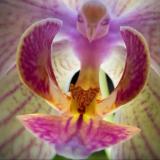
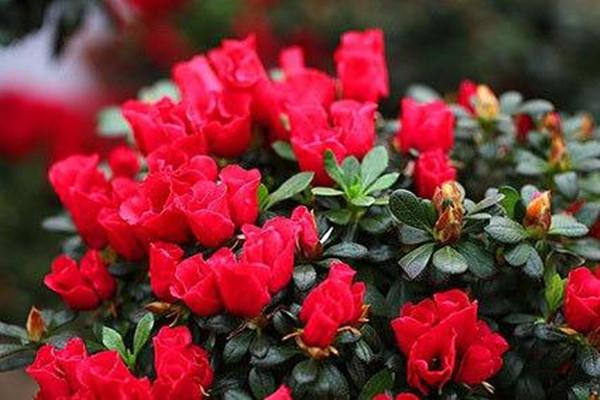
1.环境引起的
一般掉叶子可能是因为环境的原因,市场上面卖的杜鹃花基本上都是在温室里面养护的,一般买回来的话都需要对家里的环境熟悉一下的,常常还会出现掉叶子死掉的情况。这时候我们要解决的话,应该要保证它的空气湿度,还要适当的遮阴,还要保持盆土的微湿,这时候还要给它适当的通风,但是还不能让寒冷的风直接对它吹。也不要急着换土、施肥。冬天的时候还要给它充足的光照,在室内养护的时候尽量放在南边的窗户下面,环境的温度不能低于5度。还不要随意的变换地方,防止它的温度发生变化。但是不能把它放在空气比较浑浊的地方。

2.施肥不合理
如果你施肥不适当的话,也会容易促使叶片出问题,要知道冬季植株的生理活动都会减弱,如果肥料的浓度太高的话,就会比较容易让它的叶子落下。所以我们这时候要施加一点薄的液肥。

3.浇水不当
它掉叶子的另一个原因可能是浇水不好引起的,植株的根系也是比较的细的,还不怎么耐旱,冬季水分蒸发慢,浇水太多或者太少都不好的,这样子就会容易让它的叶子落下。
4.土壤引起的
杜鹃花比较喜欢酸性的花卉里面,但是经常浇水的话就会让土壤变成碱性的,这样子它是没办法生存的,会让它容易落叶子的。杜鹃花的土壤一定都要用通气比较好的酸性土壤,在平时的时候还要适当的给杜鹃花加一点肥料,这样子就可以保持种植杜鹃的土壤的正常。
5.季节交替
还有一种可能就是由于气温突降,植株为了保护自己,缩减体内水分,从而导致的生理反应,这种情况只要过一段时间就能够自己恢复了!
0
0
文章
巴黎铁塔
2018年02月03日

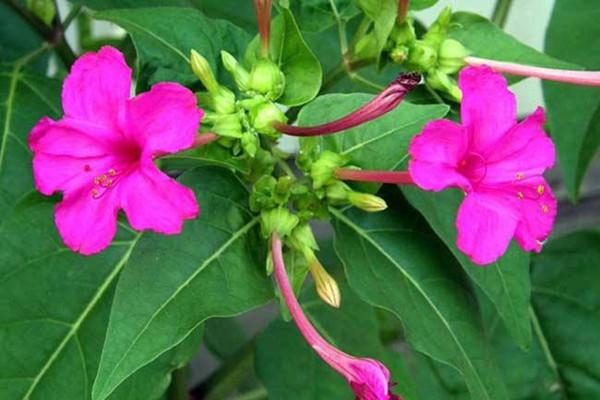
一、肥害引起的
1、施肥太多
有时候因为我们对它施肥太多或者浓度太大,就会让它新长出来的叶子颜色变成干褐色的,老叶子也变得干枯脱落,所以这时候我们一定要停止施肥了,或者用清水把它给洗一遍,以便于稀释掉多余的肥料。
2、施肥太少
有些花友在养花的时候,总是只顾得上浇水而忘记了施肥,或者长时间不给它换盆,就会让它的根须结在一起,让植株不能得到充足的养分,而让叶片发黄,这时候我们不但要及时的给它换盆,还要在平时给它勤施一点肥料。
二、浇水引起的
1、水分过多
在养它的时候,我们因为长时间的给它补水,而让水量过多,这样就会让嫩叶变得枯黄没有光泽,同时也让根变得纤细发黄,所以我们一定要控制水量,如果发黄比较严重的话,那就要考虑给它换盆了。
2、水分太少
有时候因为我们的粗心大意,而长时间不给它浇水,这样就会让它容易脱水,进而使叶子变得枯黄,所以我们这时候一定要给它及时补充水分,把浇水的量和浇水的次数加大了。

三、温度引起的
它一般不怎么耐受的了高温,在夏天的时候,天气比较的炎热,通风也不好,所以就容易发生叶面发黄的现象,所以我们一定要给它及时的通风和降温。另外因为它还不怎么耐寒,所以在冬天的时候,我们一定控制好室温,不能让温度太低了,太低的话,也是会让它叶子发黄的。

四、光照引起的
它是很喜欢享受光照的,如果你没有给它充足的光照,就会让它叶子里的叶绿素减少,这样叶子就会慢慢的失去光泽变得枯黄,所以我们这时候一定要尽量的给它移到阳光多的地方,这样才能让叶子恢复光泽。
0
0
文章
后果的大树
2018年02月02日

有一部分花友比较喜欢自己繁殖花卉,比如茶花,我们就来看看茶花的扦插方法图解,从扦插介质,到枝条的选择,扦插后的管理,希望对花友能有所帮助。
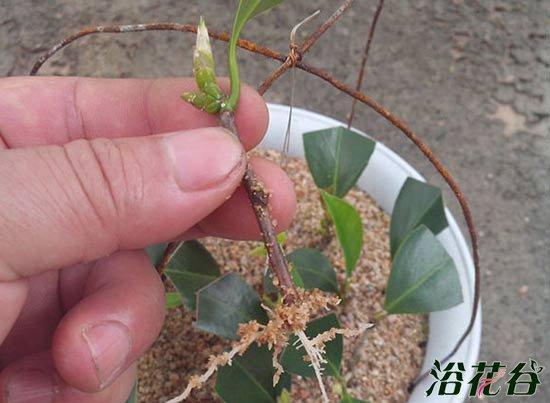
1、扦插用土:供山茶花插扦用的土壤,必须是疏松、保湿、透气性好的酸性土壤。通常采用带沙的山黄泥(南方叫红壤),但切勿用表层肥黄土。没有山泥也可用蛭石或珍珠岩代用。 不论用山泥或蛭石或珍珠岩作扦插土,其颗粒均不宜太细,也不宜过粗。
2、在花盆底部放3一4厘米离的碎砖块,上面铺一层黄豆大小的粗沙。再铺扦插土。轻轻抹平,但不要压紧。(一般填土占花盆高度的一半就可以。)

3、扦插季节:一般家庭莳养山茶花,以在夏初扦插为宜。插扦插最好在6月初进行。春节后2-3月(也就是整个开花期)也可以,这时扦插必须摘去顶牙。 秋季扦插正在实验之中。
4、插穗选择,剪下当年刚半木质化的新枝,一般用2~3节,长约5-8厘米左右的枝条作插穗的扦插。剪扦插枝条没有一个具体的规定掌握一个大原则就可以:细枝条长一些,粗枝条短一些。太短发芽会比较慢。
5、枝条的扦插。
扦插的时候找一个粗细和扦插枝条差不多的铁线或者其他材料都可以,小螺丝刀也可以,树枝也可以。茶花枝条扦插之前先用其他材料插个孔,再把茶花枝条插下去。这样做主要是为了防止茶花枝条被沙子刮破皮。全部扦插好之后要浇透水使沙子和枝条紧密结合。

6、保湿和遮光
其保湿方法最好是在花盘的上透明玻璃或塑料容器内(或塑料袋内),玻璃不要完全盖死,留一定的空隙通风。雨天可以完全那开。插穗扦插后,应保持土壤湿润,花盆空气湿度高。


1、扦插用土:供山茶花插扦用的土壤,必须是疏松、保湿、透气性好的酸性土壤。通常采用带沙的山黄泥(南方叫红壤),但切勿用表层肥黄土。没有山泥也可用蛭石或珍珠岩代用。 不论用山泥或蛭石或珍珠岩作扦插土,其颗粒均不宜太细,也不宜过粗。
2、在花盆底部放3一4厘米离的碎砖块,上面铺一层黄豆大小的粗沙。再铺扦插土。轻轻抹平,但不要压紧。(一般填土占花盆高度的一半就可以。)

3、扦插季节:一般家庭莳养山茶花,以在夏初扦插为宜。插扦插最好在6月初进行。春节后2-3月(也就是整个开花期)也可以,这时扦插必须摘去顶牙。 秋季扦插正在实验之中。
4、插穗选择,剪下当年刚半木质化的新枝,一般用2~3节,长约5-8厘米左右的枝条作插穗的扦插。剪扦插枝条没有一个具体的规定掌握一个大原则就可以:细枝条长一些,粗枝条短一些。太短发芽会比较慢。
5、枝条的扦插。
扦插的时候找一个粗细和扦插枝条差不多的铁线或者其他材料都可以,小螺丝刀也可以,树枝也可以。茶花枝条扦插之前先用其他材料插个孔,再把茶花枝条插下去。这样做主要是为了防止茶花枝条被沙子刮破皮。全部扦插好之后要浇透水使沙子和枝条紧密结合。

6、保湿和遮光
其保湿方法最好是在花盘的上透明玻璃或塑料容器内(或塑料袋内),玻璃不要完全盖死,留一定的空隙通风。雨天可以完全那开。插穗扦插后,应保持土壤湿润,花盆空气湿度高。

12
18
文章
权问薇
2018年02月02日


1.适合的温度和光照
如果想要把它养的爆盆,那合适的光照和温度条件是不可少的,尤其是光照。懂行的朋友都知道,光照对于植物来说是多么的重要,如果想要植物长得好,就需要给它充足的光照,这样才能充分满足它的生长需要,所以对于海石竹也是如此的。
可是尽管需要一定的光照,但是也要分季节性的,如果是春、秋、冬三个季节的话,多晒一点是完全没有问题的,但是到了夏天就需要注意一点了,因为这时的温度非常高,光线也比其他季节要强一点,此时万不能让它直接被太阳曝晒,不然会把它晒伤的。我们可以把它移到阴凉一点的地方,给它适当的遮阴,这样才能让它安全度夏。
另外对于温度的话,一般就是保持在15到25度之间的话,会更容易让它爆盆。
2.适当的水肥
我们先说一下肥料,对于它而言,需要的肥料并不是很多,偶尔施加一次就可以,次数不可以太勤了。另外浇水也是如此,如果遇到天气异常燥热的话,那我们就可以适当多浇一点,但是如果遇到雨水较多天气时,那就要少浇一点并要给它及时排掉多余的水,这样才不会让多余的水分伤害到它的根,让根更好呼吸,为植株供给更多的营养,才会让它更容易爆盆。

3.合适的栽培基质
为了让它更容易爆盆,在最开始选择基质的时候就要重视起来,它一般比较喜欢排水好一点并且疏松一点的基质,所以在选择基质的时候一定要选满足这一要求的。
另外如果在基质中加入一些有机物质,那样种出来的植株生长状态会更加好,这样离以后的爆盆也就不远了。

0
0



